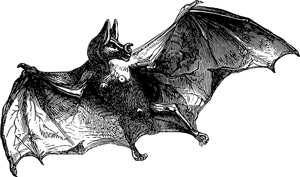
August 24, 2020
Finding The Origin Of COVID-19 In Bat Caves
By Michael D. Shaw
As the COVID-19 pandemic is hopefully winding down, the search continues for a credible origin story of SARS-CoV-2, the viral cause of the disease. Last week, we discussed how gain-of-function research on related bat SARS-like viruses could have led to an engineered pathogen, that was accidentally released from a Wuhan Lab.
After all, back in 2005, Wuhan-based virologist Shi Zhengli, the “Bat Woman,” identified dozens of deadly SARS-like coronaviruses that were found in samples of bat droppings that Shi and her team collected in caves. One of those samples contained a viral genome that is 96% identical to SARS-CoV-2. The droppings, called “guano,” are highly-prized as a fertilizer. As such, the bat caves of China are worked heavily by guano miners.
Fast forward to April, 2012. Six miners were working in an abandoned mine shaft at the Mojiang mine in China’s Yunnan province that was loaded with bat guano, along with a fungus that had built up on it. These men became ill, and three eventually died. In his May, 2013 master’s thesis, the treating physician, Li Xu, described their symptoms: high fever, a dry cough, sore limbs and, in some cases, headaches. Notably these are all associated with COVID-19. And, the miners were treated with ventilation; and an assortment of drugs including steroids, blood thinners, and antibiotics—which also parallels current COVID-19 treatment modalities.
These findings were released once virologist Jonathan Latham and molecular biologist Allison Wilson, of the non-profit Bioscience Resource Project in Ithaca, NY, translated Li’s thesis, posting it here.
While attempting to do patient work-ups, and determine a course of treatment, Li consulted with many specialists, including pulmonologist Zhong Nanshan, a beloved scientist, who managed the SARS outbreak in 2003. Latham and Wilson note that bringing in Zhong is significant, since it implies that the illnesses of these miners were of great concern, and a SARS-like virus was being considered as a cause.
Li also sent tissue samples to the Wuhan Institute of Virology—home of the “Bat Woman”—for testing. According to a Scientific American article from June, she explained that the miners died from a fungal infection, although it would have been only a matter of time before they caught the coronaviruses if the mine had not been promptly shut down.
Among other interesting points, the Li thesis notes that the immune systems of the miners were compromised and remained so even for those discharged. This weakness may also have encouraged evolution of the virus. Moreover, unlike typical coronaviruses that typically run their course in 10-14 days, at least two of the surviving miners suffered from the illness for over four months.
In their presentation of Li’s paper, Latham and Wilson raise some questions: Why did Bat Woman Shi’s lab not acknowledge the miners’ deaths in any paper describing samples taken from the mine? There were five scientific publications that very early in the pandemic reported whole genome sequences for SARS-CoV-2. Yet, only one of these succeeded in identifying the most closely related viral sequence by far: BtCoV/4991, a viral sequence in the possession of the Shi lab that differed from SARS-CoV-2 by just five nucleotides.
The work and conclusions of Latham and Wilson have been praised by experts in the field, including George Church and Stuart Newman, who referred to it as “the best sourced explanation yet of the origins of SARS-CoV-2.”
Excellent work, but any way you slice it, all roads still lead back to China.
